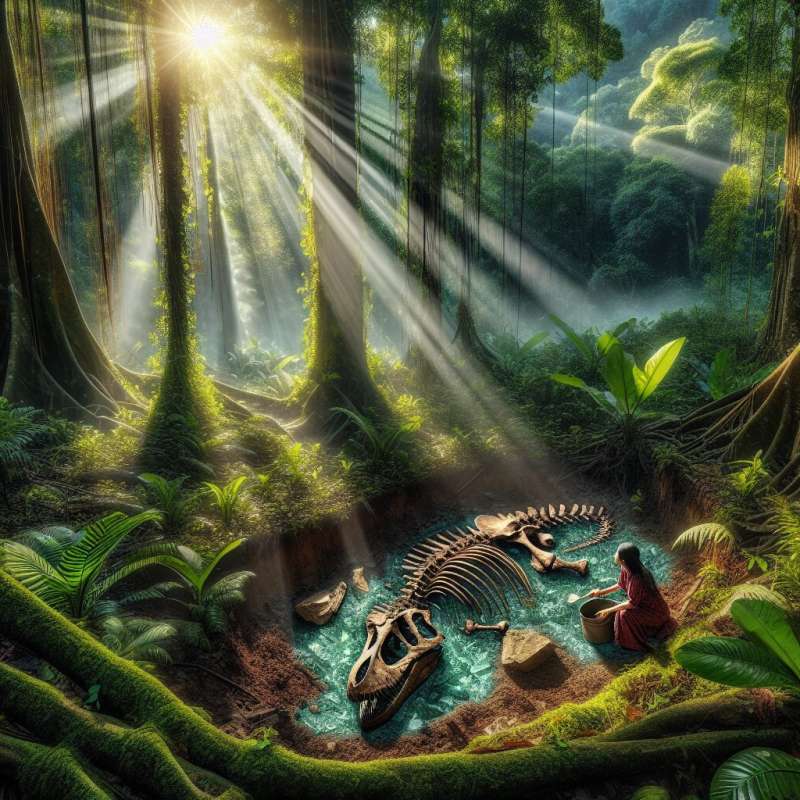
Fossilization: A Rare Occurrence
Dinosaur fossilization is exceptionally rare, requiring specific conditions. Carcasses must avoid scavengers, quickly covered by sediment, and remain undisturbed for millions of years to allow mineral replacement of bones.
Step One: Death Happens
The process begins when a dinosaur dies. Ideally, the body falls into a water-rich environment like a river or floodplain, which helps in the preservation of the remains.
Step Two: Sedimentation
Sediment must bury the remains rapidly. This preserves the shape and position of bones, protecting them from oxygen and organisms that would otherwise lead to decomposition.
Step Three: Permineralization
Groundwater penetrates the remains, depositing minerals like silica or calcite into the bone's porous structure. These minerals crystallize, turning bone into stone in a process called permineralization.
Step Four: Lithification
The sediment embedding the remains compacts and hardens over time, becoming rock. This process, lithification, further entombs the bones within solid strata.
Fossils Unearthed
Erosion and tectonic activity eventually expose the fossils. Paleontologists use careful excavation methods to unearth these ancient treasures without damaging them.
Soft Tissue Preservation
Fossilization of soft tissues is incredibly rare. Exceptional cases involve rapid entombment in environments free of bacteria, allowing impressions or actual soft tissue to survive.Dinosaur Dung Fossils
Coprolites, fossilized dinosaur dung, provide insights into ancient diets and ecosystems, revealing surprisingly detailed information about prehistoric life.
What is essential for fossilization?
Rapid burial and mineral-rich water
Exposure to air and sunlight
Constant disturbance and movement
Company